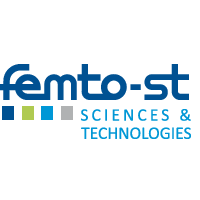Project Summary
Quantum information processing is one of today’s most exciting challenges. Many scientists are working on a variety of quantum bits, or qubits, that could stand at the heart of quantum processing systems. Although striking achievements
have been made on the qubits themselves, routing quantum information on-chip from one location to another is still an open problem.
Over the past thirty years, the remarkable technological advances in microfabrication processes have thrust mechanical vibrations into the quantum realm. The intrinsic coherence of mechanical motion and the capability to couple it to other physical degrees of freedom hold promises of scalable hybrid quantum platforms. But mechanical vibrations are also powerful conveyors of physical information. They are ubiquitously used in wireless communication systems, where bulk and surface acoustic wave (BAW and SAW) devices are prevalent. Their high achievable quality factors and frequencies, as well as their low propagation speed, are appropriate ingredients for information processing: they are synonymous of storage and delay.
The stakes here are high, as quantum technologies are in need for robust, scalable solutions for the implementation of sensors beyond the standard quantum limit, for the deployment of quantum communication or as a platform for quantum computing, with the tremendous reduction in the need for resources it entails.
Recent works have shown that elastic waves could be operated at a single-phonon level and therefore used as information carriers truly able to encode a quantum state and to entangle it to a solid-state qubit. But despite their extremely novel and exciting character, the reported works do not take the measure of the full potential offered by surface acoustic waves .
The uNIQUE project aims at the development of an all-electro-acousto-mechanical quantum information platform exploiting the full potential offered by surface acoustic waves in the single-phonon regime, and by mechanical resonators beyond the standard quantum limit. It adopts a yet unexplored approach at the crossing of phononics, nanomechanics and quantum acoustics to yield a fully coherent mechanical playground that can be used at the interface with other solid-state or photon qubits or as an independent quantum signal processing system. It will exploit the substrate surface to prepare and transfer non-classical states of motion of surface-coupled phononic resonators with the utmost ambition to encode the state information in a travelling single-phonon, allowing remote entanglement. This platform will allow manipulating quantum states in exceedingly compact systems driven by a sheer radio-frequency signal.

